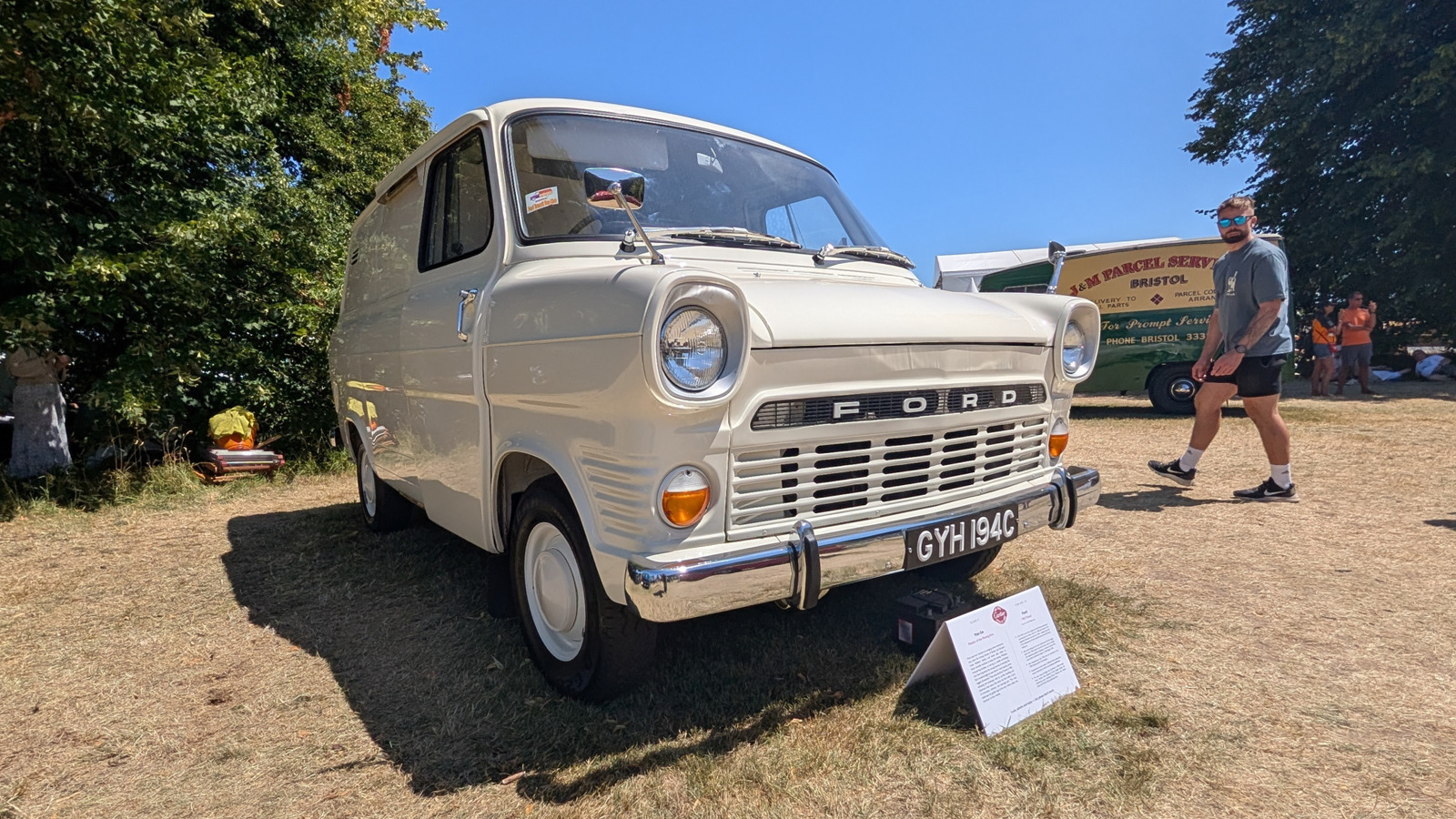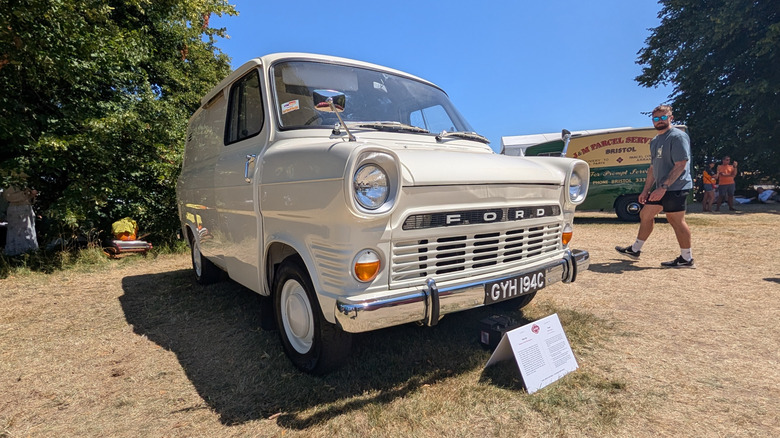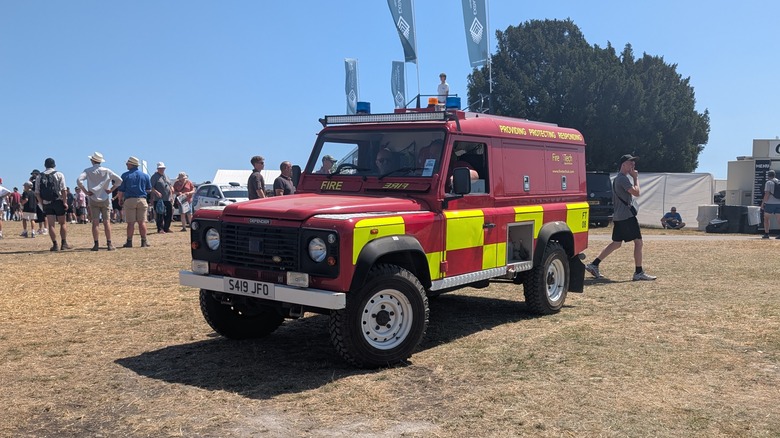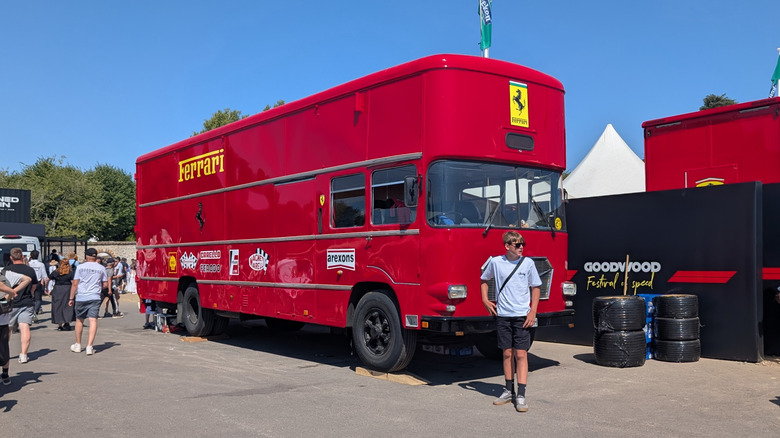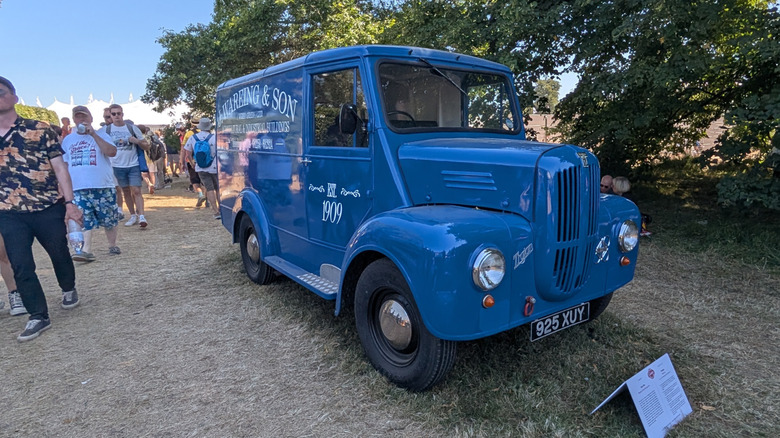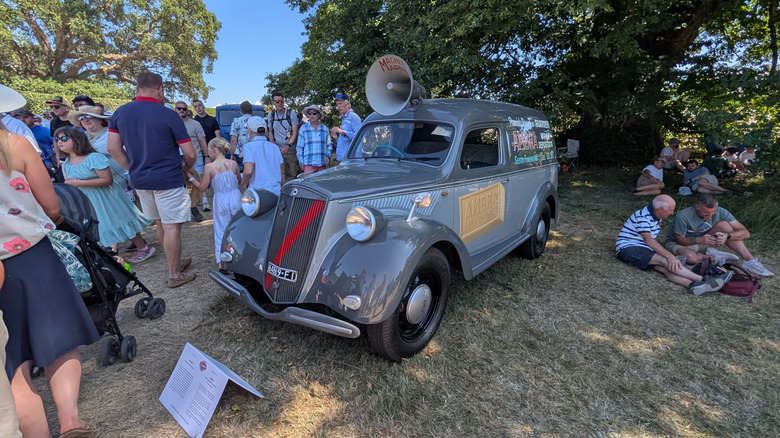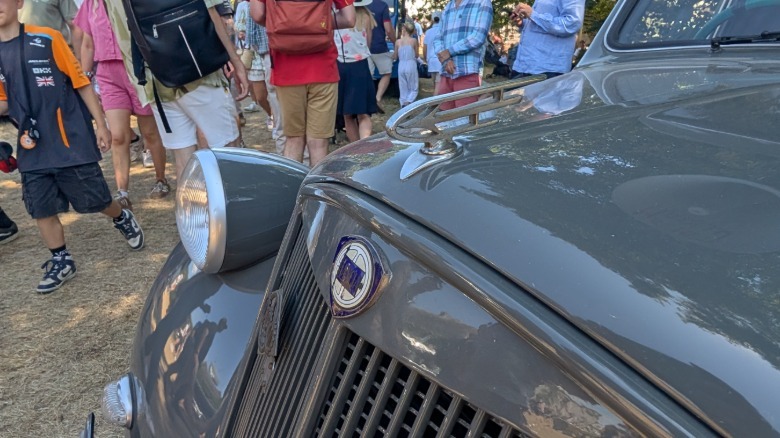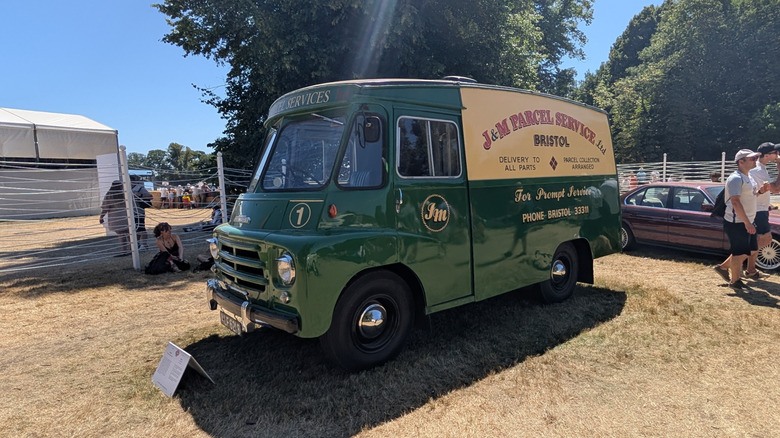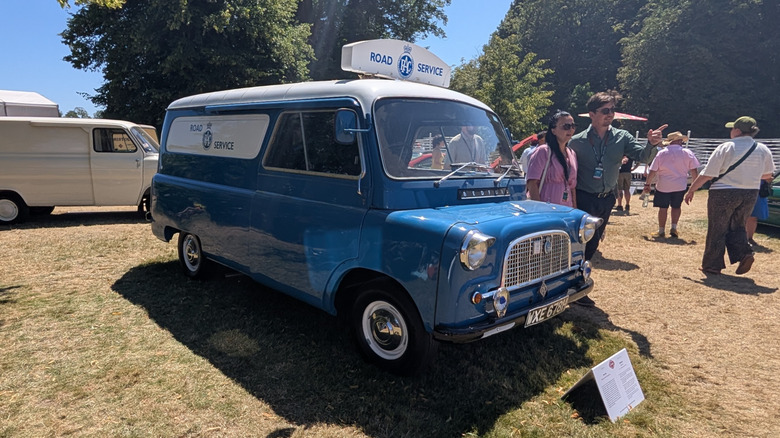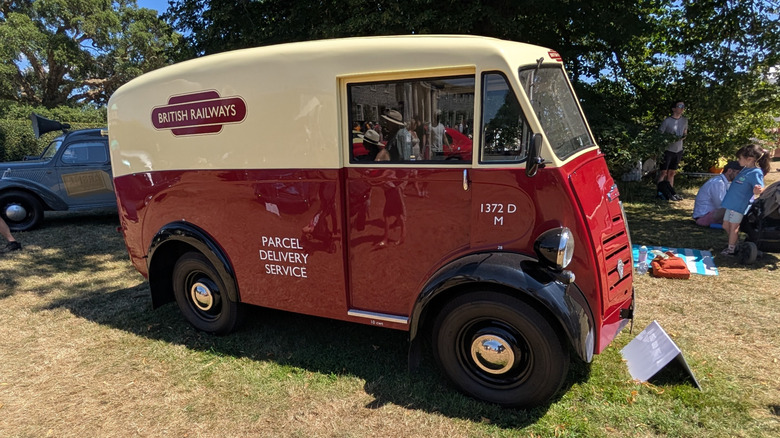Goodwood Festival Of Speed is dedicated to classic race cars and supercars of mind-boggling speed, power and price. Do a quick walk down the staging area before the supercar run and you’ll find enough finely carved carbon fiber and fiber glass to reach well over a billion bucks all sitting in the brilliant British sun on just a few hundred feet on track. While these vehicles are fantastic, this is Jalopnik, and we’re more interested in the every day vehicles that keep the world moving. While the rally stage is where I initially fell in love with the hard-working cars of the craziest car exhibition on Earth, there also happened to be a special exhibition this year called Van Go – Masters of the Moving Arts. Of course, I fell in love with every boxy, weird vehicle on display. Naturally I’ve brought every single one of those to you.
There are some unsung heroes who didn’t make the list. Goodwood is swarmed by golf carts and John Deere-esque open tractor things that do the real legwork of keeping the show moving, but I never seemed to be in a good opportunity to grab a picture and information on them. Some vehicles are working too hard for the likes of a silly blog post.
Land Rover 101 Forward Control Rally Recovery Vehicle
This tough yellow truck stole my heart as soon as we made our way on to the rally car staging area on the first day of Goodwood. The truck was developed for the British Ministry of Defense during the cold war, and also goes by the name Land Rover One Tonne because it could trailer a 2.5-tonne field gun while also transporting one tonne of ammunition. It’s basically a box perched on top of tractor tires, and the engine is in the back while the driver and front passenger sit over the front axle, hence the Forward Control name. Is compact boxy design helped the Brits transport this thing on cargo planes to everywhere from Indonesia to Oman and beyond. It also needed to be easy to convert into other vehicles such as ambulances and troop carriers, making it an all-around excellent vehicle for in the field combat operations. It was more than ready and willing to drag any wayward rally cars out of the woods.
Land Rover 110 Angloco
Another rally rescue vehicle, this Land Rover Defender was built out by a company called Angloco, which is devoted to building out fire trucks. These fire trucks are found all over the world where the British once held a presence, including Barbados.
1967 OM Fiat 150 Rolfo Ferrari racing transporter
This is a classic, and racing fans have likely seen this before–likely on this website in a list quite similar to this one. And guess what? You’ll hear about it again! This racing transporter is so iconic you can get very expensive die cast versions. It’s a bus built for moving amazing Formula 1 cars, and it manages to be amazing all on its own.
1956 Trojan Van
Now we get into the classics from the Van Go series (that name is so cheeky and British). These cars worked hard in their day, and now enjoy a retirement after extensive rehabs in the Cartier section of the Goodwood Festival of Speed. These are vehicles supported England through the post war era all the way up until 1965, when the Ford Transit took over Britain’s motorways. But for a good twenty years at least, Brits’ last mile deliveries came in the form of outstanding designs. The Van Go exhibit called this van the absolute workhorse of post-war Britain. The Brooke Bond Tea Company ordered multiple vans and they became a well-known sight around England. With a tiny three-cylinder diesel engine and 3-speed gearbox it was only capable of a max speed of 38 mph. I guess caffeine was a slower business back then. This example was rehabbed in 2008.
1953 Lancia Ardea 800 Furgoncino
Only 7,000 of these cuties were ever made, and far fewer still exist in the world today. That’s too bad, as these seem to have a long shelf life. Another surviving example served in the forestry service in Sicily from 1961 to 2012, according to RM Sotheby’s. Apparently, that example (a 1952 model) wasn’t used much after a restoration in the 90s, but still. This entire delivery truck is powered by a 903-cc narrow-angled V4 engine and was one of the first small vehicles to employ a 5-speed transmission. I really love the red stripe across the grille, but it’s this amazing hood ornament that steals the show.
1964 Morris LD30
Another vehicle for the British Ministry of Defense, this Morris van started life serving the British people in the crucial post-war era. The van was a favorite of both civilian and military fleets and was even used as ambulances, especially in London, starting in 1956. The vans became iconic on London roadways, and were called “Wandsworth” because that’s where the retrofitting was done. Because they were such workhorses very few still exist today, with even fewer maintaining a trackable linage back to the MOD.
1965 Ford Transit
Originally named Project Redcap, this Ford Transit was developed by British and German branches of the Ford Motor Company, seemingly putting to bed all the post war animosity. It was first developed for Europe, but the triple threat of useful, cheap and reliable meant these vans soon spread all over the globe. The 1965 Ford Transit was just better at everything the previous vans were doing, but this particular van has an incredible heritage. It’s one of the ten original prototypes commissioned by Henry Ford II in 1960, and it even ran the legendary Boreham race circuit in 1964. After that it disappeared in the 1970s into Ford’s megalithic system, only to resurface in the 1998 film “The Avengers.” After that it underwent a six-year rehab and its roots were confirmed by a former Ford employee.
1969 Bedford CA
This is a hardworking van that started life keeping other cars on the road. It was part of the Royal Automobile’s Club roadside assistance fleet in the Hertfordshire district — that is by far the most British sentence I’ve ever written. It came with a screamin’ 1.6-liter engine and was even available as an early camper van conversion. This was a much more familiar sight on British roads than any of the other entries into Goodwood’s Van Go exhibit. Bedford lasted from 1931 to 1986, starting with Vauxhall Motors and then General Motors after GM bought Vauxhall before deinvesting in Bedford, which allowed it to be swallowed up by several layers of companies.
1959 Austin 101
This Austin 101 is just a Morris in disguise, but we forgive it. All it took to power this little parcel delivery van around Bedford was a 1.5-liter engine and a 4-speed gearbox. Folks could really do a lot with a little back then. By the time its production run came to an end nearly 49,000 Austin 101s had been built. This livery was added during the vans restoration, which took seven years until its completion in 2017. Apparently this livery is affectionately known as “rhubarb and custard” and yeah, I see it.


